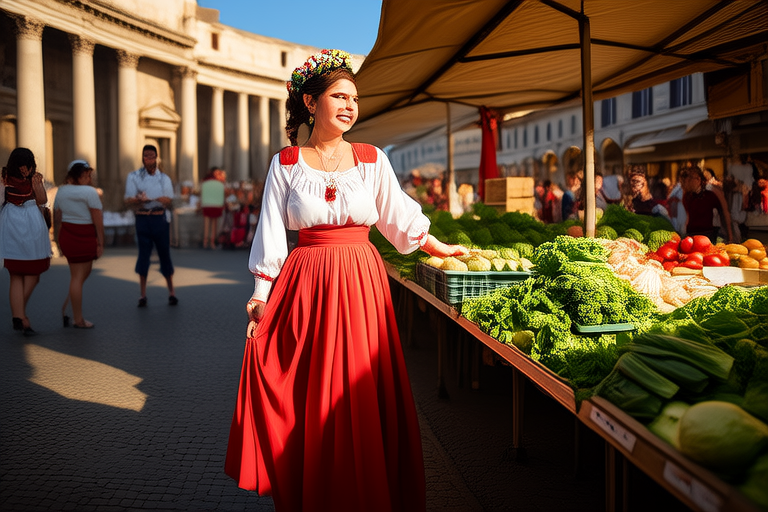When in Rome: Embracing Unique Cultural Practices Across Continents

When in Rome: Embracing Unique Cultural Practices Across Continents
Introduction: The Art of Cultural Immersion
Traveling is more than just visiting new places; it’s about connecting with the essence of a destination by understanding its people, traditions, and way of life. One of the most enriching aspects of travel is cultural immersion—the act of stepping into someone else’s world to experience their unique customs and practices. This not only deepens your appreciation for the diversity of human experience but also fosters mutual respect and understanding. As the saying goes, “When in Rome, do as the Romans do.” By embracing local traditions, travelers can create meaningful connections, gain fresh perspectives, and make their journeys truly unforgettable.
Asia: The Serenity of Japanese Tea Ceremonies
In Japan, the tea ceremony, or “chanoyu,” is a centuries-old practice that embodies harmony, respect, tranquility, and purity. Rooted in Zen Buddhism, this ritual is not just about drinking tea but about appreciating the beauty of simplicity and mindfulness. Every movement, from the preparation of the matcha (powdered green tea) to the careful arrangement of utensils, is deliberate and steeped in symbolism.
The tea ceremony reflects Japan’s deep respect for nature and tradition, offering participants a moment of stillness in a fast-paced world. For travelers, participating in a tea ceremony can be a transformative experience. Many tea houses in cities like Kyoto and Tokyo welcome visitors, providing an opportunity to learn about the ritual’s history and significance while practicing etiquette such as bowing before entering and handling the tea bowl with care. By engaging respectfully, travelers can honor this sacred tradition and leave with a profound sense of calm.
Africa: The Vibrancy of Maasai Jumping Dances
In East Africa, particularly among the Maasai communities of Kenya and Tanzania, traditional jumping dances are a cornerstone of cultural expression. Known as “adumu,” these dances are performed during ceremonies such as weddings and rites of passage. Men form a circle and take turns leaping into the air as high as possible, showcasing strength, agility, and communal spirit.
This practice holds immense social significance, reinforcing bonds within the community and celebrating milestones. For outsiders, witnessing or even joining in an adumu dance can be a powerful way to connect with Maasai culture. Many villages offer cultural tours where visitors can observe these performances and sometimes participate under the guidance of elders. It’s essential to approach such experiences with humility and respect, recognizing the dance’s deeper meaning beyond mere entertainment.
Europe: Spain’s Passionate Flamenco Tradition
Flamenco, originating in Andalusia, Spain, is a fiery art form combining music, singing, dancing, and guitar playing. Its roots trace back to Romani, Moorish, and Spanish influences, making it a vibrant fusion of cultures. Flamenco performances often convey raw emotions like joy, sorrow, love, and defiance, captivating audiences with their intensity.
For travelers visiting southern Spain, attending a flamenco show in cities like Seville or Granada is a must. Beyond spectating, some venues offer workshops where participants can learn basic footwork or hand-clapping techniques, gaining insight into the discipline required to master this intricate art. Engaging with flamenco respectfully involves applauding at appropriate moments and acknowledging the skill and passion of the performers. Doing so allows visitors to appreciate flamenco not just as a performance but as a living embodiment of Spanish heritage.
South America: Peru’s Mystical Inti Raymi Festival
Every June, the city of Cusco in Peru comes alive with the celebration of Inti Raymi, or the Festival of the Sun. This ancient Incan festival honors Inti, the sun god, and marks the winter solstice in the Southern Hemisphere. Historically, it was one of the most important religious ceremonies of the Inca Empire, involving processions, prayers, and offerings to ensure prosperity and fertility.
Today, Inti Raymi is a grand reenactment featuring colorful costumes, traditional music, and dramatic rituals performed at iconic sites like Sacsayhuamán. Travelers attending the festival have the chance to witness Peruvian history come alive while learning about indigenous spirituality and cosmology. To participate respectfully, visitors should dress modestly, follow local guidelines, and refrain from intrusive photography during sacred moments. Experiencing Inti Raymi offers a window into the enduring legacy of the Inca civilization and the resilience of Andean culture.
Conclusion: Celebrating Diversity Through Tradition
From the serene elegance of Japanese tea ceremonies to the exuberance of African jumping dances, the world is brimming with unique cultural practices waiting to be explored. Each tradition tells a story—of history, values, and shared humanity—that transcends borders and languages. By immersing ourselves in these customs, we move beyond being passive observers and become active participants in the global tapestry of cultures.
As you plan your next adventure, consider how you can embrace local traditions with openness and respect. Whether it’s sipping tea in Kyoto, dancing with the Maasai, clapping along to flamenco rhythms, or marveling at the splendor of Inti Raymi, each experience has the power to transform your journey. So, when in Rome—or anywhere else—embrace the opportunity to do as the locals do. After all, the true magic of travel lies not in the places we visit but in the connections we forge through shared cultural moments.